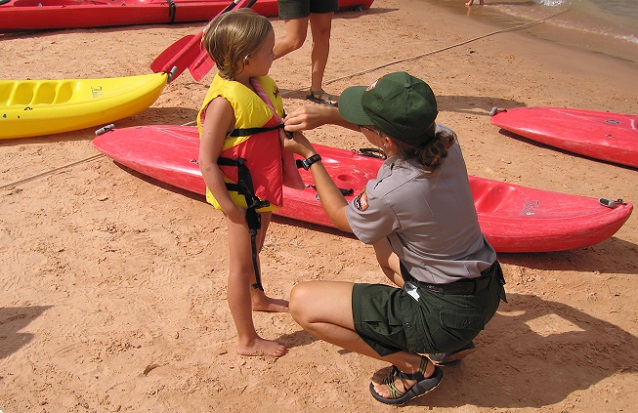
NPS photo
The National Park Service (NPS) has partnered with Water Safety USA to promote the life saving message of “Designate a Water Watcher – Supervision Could Save a Life”.
WHY DESIGNATE A WATER WATCHER:
Most fatal drownings happen when there is poor or absent supervision. A Water Watcher is essential to prevent drownings and bring everyone home from a fun day in the water. Drowning is the second leading cause of unintentional injury deaths for children 1—14 years of age nationwide. Three children die every day across the United States as a result of drowning. In many cases, drowning happens quickly and quietly.
WHAT IS A WATER WATCHER:
A Water Watcher is someone who supervises children, adolescents, and those with little or no swimming skills. They:
- Stay within arm’s reach of the people they supervise
- Pay attention and avoid distractions
- Stay in the area until replaced by another adult
A Water Watcher is NOT a substitute for a lifeguard. You should always choose a lifeguard-protected area where available in addition to designating a Water Watcher, as drowning can even happen in the presence of lifeguards. You, and everyone in your group, should also wear a U.S. Coast Guard approved life jacket when recreating in natural waters like rivers, lakes, and oceans.
WHO CAN BE A WATER WATCHER:
Water Safety USA recommends that an appropriate water watcher is someone who:
- is 16 years old or older (adults preferred)
- is alert and not under the influence of alcohol or drugs
- has the skills, knowledge, and ability to recognize and rescue someone in distress OR can immediately alert a capable adult nearby
- knows CPR or can alert someone nearby who knows CPR
- has a working phone to dial 9-1-1
- has a floating and/or reaching object that can be used in a rescue
LAYERS OF WATER SAFETY:
Supervision is only one of the layers of water protection. When recreating in, on, and around water you should:
- Wear a life jacket
- Learn to Swim
- Check water conditions
- Check the weather
- Recreate near a lifeguard when one is present
Plan and prepare for your trip with help from the NPS Trip Planning Guide and Junior Ranger Park Explorer. Learn more about your Health & Safety in national parks
Additional Resources
Last updated: June 5, 2018
